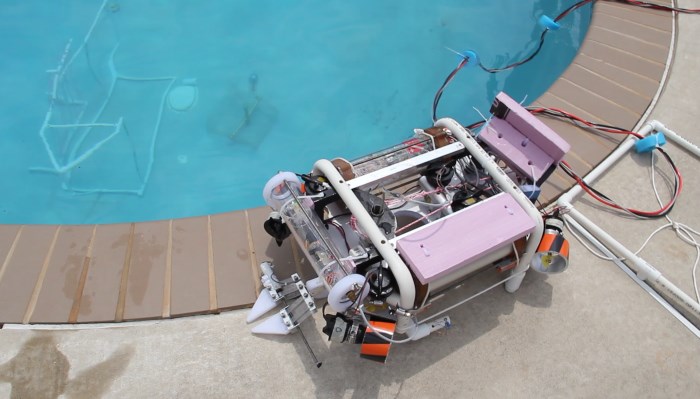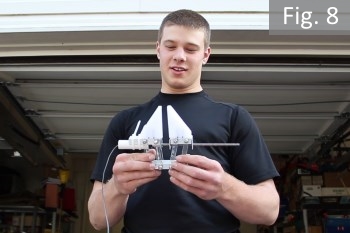We used PVC for the frame of Poseidon Mk. 1 because it is cheap and easy to work with. We chose this shape because it had superior stability, tool mounting options, and a better ability to support our vectored thruster arrangement. Vectored thrusters are propellers arranged at the four corners of the ROV and angled at 45 degrees. This arrangement allowed maximum maneuverability using fewer thrusters.
The electronics, including the camera (fig. 1), were encased in a custom-made waterproof pressure housing in the center of the ROV (fig. 2).
ROVs use a tether to receive power and to communicate with the surface. On the surface, we had a laptop that ran the main program running the ROV. We used an Xbox 360 controller to pilot the ROV, because it allowed great control and several input options.
After the Regional competition, we added the rotating tool mount (RTM) under the ROV, which allowed the use of up to four different tools, despite only having one camera. One of the tools used was a manipulator (fig. 3).














